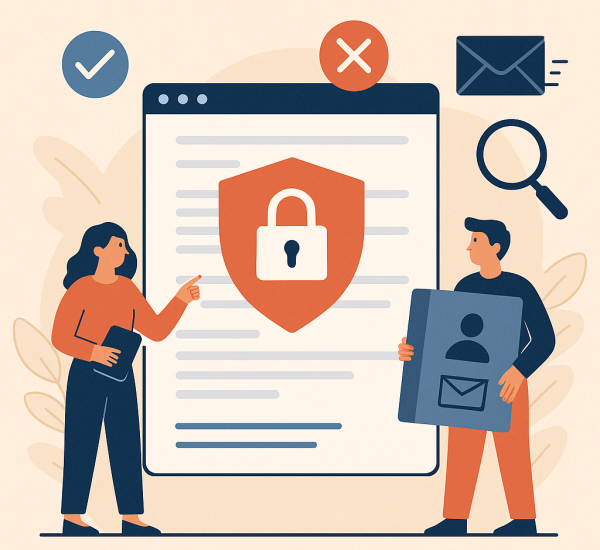
Email Privacy: More Than a Checkbox
Your email list is one of your most powerful marketing tools,but it comes with serious responsibilities. In today’s landscape of spam filters, privacy laws, and increasing consumer skepticism, how you collect, use, and protect subscriber data can directly impact your brand’s reputation and performance.
This guide, powered by mySMTP, walks you through everything you need to know to run ethical, privacy-first campaigns that your subscribers (and your inbox providers) will respect.
- Consent First, Always
The foundation of a privacy-respecting email strategy is explicit consent.
What this means:
- Use opt-in forms that clearly state what the user is signing up for.
- Double opt-in (confirmation emails) help ensure the person actually wants your content.
- Don’t pre-check boxes or hide terms in fine print.
What to avoid:
- Purchased, rented, or third-party email lists.
- Adding people from unrelated business interactions (like event signups or customer support tickets) without permission.
Why it matters: Sending emails without consent isn’t just annoying—it may be illegal under laws like GDPR (Europe), CAN-SPAM (US), CASL (Canada), and others.
- Transparency Is Non-Negotiable
Subscribers deserve to know:
- What data you’re collecting.
- Why you’re collecting it.
- How it will be used.
- If (and with whom) it will be shared.
Make this information clear in your privacy policy and during the sign-up process. And if you’re tracking user behavior (like open rates, clicks, or location), you should disclose that too.
Bonus tip: Add a brief summary of your privacy practices right under your opt-in form. It increases trust and improves conversions.
- Don’t Overstep the Inbox
Even with consent, you still need to practice email etiquette:
- Don’t send too frequently (unless the user opted into high-volume messages like daily deals).
- Use honest, non-clickbaity subject lines.
- Make it easy to unsubscribe with a visible, working link.
- Let subscribers adjust preferences instead of just unsubscribing.
Misuse of the inbox leads to:
- Higher unsubscribe and spam complaint rates.
- Lower deliverability.
- Damage to your domain reputation.
- Audit and Clean Your Email List
An email list isn’t “set it and forget it.” It needs regular cleanup and review.
Do this every 3–6 months:
- Remove hard bounces (invalid emails).
- Re-engage or remove subscribers who haven’t opened in 6–12 months.
- Watch for role-based addresses (info@, sales@) which often have low engagement.
Why this matters: Inactive or unverified lists harm your sender reputation and could get you blacklisted by ISPs.
- Handle Subscriber Data with Care
You’re responsible for protecting the personal data your subscribers entrust you with.
Best practices:
- Use reputable, secure email service providers (ESPs).
- Limit who in your team has access to raw subscriber data.
- Never export or store lists on unsecured spreadsheets or devices.
- Don’t share, sell, or rent your list—ever.
If you work with third-party tools, make sure they comply with privacy regulations and sign data processing agreements when required (especially for EU users under GDPR).
- Compliance Isn’t a One-Time Setup
Privacy laws are evolving. What’s compliant today might not be tomorrow.
- Stay updated on relevant laws: GDPR, CAN-SPAM, CASL, and emerging state-level laws like the California Consumer Privacy Act (CCPA).
- Review your email practices at least once a year.
- Consider appointing a privacy lead or consultant if you manage large lists or cross-border data.
Privacy Is Good Business
At the end of the day, privacy-respecting email campaigns:
- Build deeper trust with your audience.
- Improve deliverability and open rates.
- Reduce unsubscribes and spam complaints.
- Future-proof your marketing against legal and technical pitfalls.
Respect your subscribers’ privacy like you would a good friend’s phone number. Handle it with care, transparency, and respect—and it will serve your brand for the long haul.
